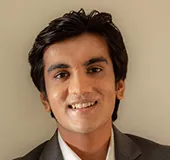-
CENTRES
Progammes & Centres
Location

Countering Violent Extremism (CVE) strategies have been rapidly evolving as an essential component of security studies. The mass hysteria associated with terror threats and its coorelates with radicalisation has caused quite a rupture in traditional approaches to counter-terrorism. CVE strategies, as embodied by the likes of the Prevent Programme commissioned by the United Kingdom, have been considered to take a “soft” approach to counter-terrorism with a commitment to understanding and uprooting the subliminal drivers of radicalisation. However, the interchangeable use of terms like “extremism”, “terrorism” and “radicalisation” has posed key obstacles to coherent strategies aimed at countering violent extremism. This article explores the importance of clearly defining these variables before devising appropriate strategies. Moreover, we look at the lessons India can draw from the failures of CVE programmes as commissioned by the UK and the United States in creating a more robust CVE programme that minimises biases and selective targeting of particular marginalised groups.
The fact that CVE strategies have often been conceived under the larger umbrella of counter-terrorism strategies reflect the extent of conceptual confusion pertaining to the use of these terms. One possible reason for why these terms are used interchangeably is that when one thinks of “why” a terrorist commits acts of violence, the rationale of them being “extremists” is seen as an acceptable narrative to believe. But what does one mean when they label people as “extremists”? This question presents the crux of the problem facing policymakers trying to formulate strategies in countering extremism. A specific problem faced while operationalising the construct of extremism is figuring out whether the term is used in relation to beliefs or acts. Thus, in the case of the National Liberation Front (NLF) in Algeria or the secessionist movement in Ireland, their belief for self-determination is often underscored by reasonable entitlements. Nonetheless, the means used to achieve their reasonable entitlements are considered extreme as they attack non-combatants. Thus, members of the NLF are considered as terrorists but whether they are extremists is a matter of dispute. Thus, policymakers must try to evade this lack of consensus on what the term entails by laying out how they propose to define extremism and what are the specific inclusion and exclusion criteria for/individuals to be labelled as extremists.
Another factor adversely affecting the efficiency of CVE programmes is the overemphasis on ideology as a driver of radicalisation. Formally known as the Conveyor Belt theory, this belief about the primacy of ideology in facilitating radicalisation was a foundational principle on which the Prevent programme was built. Thus, this programme gave little emphasis to the role of relative deprivation and notions of victimhood in leading people towards the path of violence. A spillover effect of this Conveyor Belt theory is the overemphasis on Islamic faith as being a predictor of radicalisation. The Prevent programme, much like the US’ attempts at CVE strategies, sought to target their CVE programmes towards people who shared common identities with terrorists. Post 9/11 attacks, these people have largely been Muslims. A review by the House of Commons stated that the Prevent programme’s overemphasis in focusing on Muslims as the flagbearers of terrorism was “stigmatising, alienating and counterproductive”. Additionally, the means by which these programmes focused on Muslims was through law enforcement agencies seeking to know whether the Muslim community have knowledge of potential terror plots. These efforts of law enforcement under the ambit of a CVE programme ran alongside numerous cases of rising hate crimes against Muslims in the US. Although the targeting of Muslims within the CVE framework and rising hate crimes may not have been correlated, the Muslim community in the United States surely drew some parallels. This presents a major obstacle to the efficiency of CVE programmes. Both in the UK and the US, the prejudice against the Islamic faith is extensive. A 2015 poll in North Carolina reported that 72 percent of people who identified as Republican believed a Muslim should not be allowed to be President, while 40 percent believed Islam should be banned. Moreover, a recent report by the California State University found a 78 percent increase in cases of hate crimes against Muslims from 2014-2019. Based on such perceptions, these studies suggest that any strategy to seek the help of local Muslim populations to help mitigate terror threats was bound to fail. American Muslims felt that their public safety as a result of increasing violent crimes against their group was not adequately addressed and reported feeling cheated by law enforcement officers. Thus, creating CVE programmes that merely focus on ideology as a grounding force for violence leads to alienating the group that subscribes to the ideology in any shape or form. Moreover, this approach, as embodied by the Prevent programme and CVE programmes in the US, fail to realise that ideology is shaped by the grievances as perceived by the marginalised group. Thus, even if one seeks to ascribe radicalisation to ideology, the latter must not be an a priori assumption guiding a CVE strategy. Instead, it must be analysed in context with the notion of fairness and perceived injustice guiding their actions.
The failures of CVE strategies described above present valuable lessons for India in case it decides to formulate a CVE programme. Amendments to the Unlawful Activities (Prevention) Act in August 2019 further demonstrate the lack of conceptual clarity with respect to terms like “terrorism”. At a speech in the Lok Sabha after amendments to the UAP Act, Union Home Minister Amit Shah echoed the aforementioned confusion pertaining to what terrorism is: “Terrorism is not just fostered by the gun. Terrorism is also the spread of hate and radicalism”. According to this view, terrorism is not seen as a strategy to attack non-combatants so as to achieve policy change against a conventionally superior state. Instead, this vague description of terrorism seems to have many overlaps with extremism. And, as seen with the failure of CVE in the West, these overlaps in definitions must be ironed out.
If unclear definitions of terms like extremism and an ideology-centric approach to CVE has proved disadvantageous, what could be the alternatives? One major change that CVE programmes could benefit from is by realising the importance of reference points in determining a rationale for violence. Borrowing from the Prospect theory, this approach lays emphasis on competing notions of fairness as a basis for extremism. Thus, taking the example of the Kashmir conflict, the civilians vying for self-determination have a notion of fairness that confronts the status quo whereas the Centre has a notion of fairness that aligns with the status quo. It is a tussle between these notions of what is fair that underscores many conflicts between states and rebellious entities. Thus, a CVE strategy, instead of trying to shape the ideology of at-risk populations as a means to curb radicalisation, must look to understand their notion of fairness that guides their desire for violence. A way to do the same is to integrate the social sector to provide community-wide interventions that present the rationale that guides the so-called “adversaries” side of the story. Integrating the social sector as the communicators of these interventions is crucial, because groups that feel discriminated against by law enforcement may not take well to CVE programmes implemented by those people. In order to avoid such issues, NGOs showing neutrality may be an asset to CVE programmes in the context of an India that is divided into numerous fault lines.
Thus, a need for clear definitions of terms like radicalisation along with a CVE programme that looks beyond the ideological basis of extremism is imperative. CVE programmes may present certain unforeseen hurdles to the administration but working towards setting up a team in its pursuit is a must. With India being in a geopolitically sensitive zone, countering violent extremism must be seen as going beyond the fight against Islam as the latter presents merely a symptom of systemic drivers of radicalisation.
The views expressed above belong to the author(s). ORF research and analyses now available on Telegram! Click here to access our curated content — blogs, longforms and interviews.

Prithvi Iyer was a Research Assistant at Observer Research Foundation Mumbai. His research interests include understanding the mental health implications of political conflict the role ...
Read More +